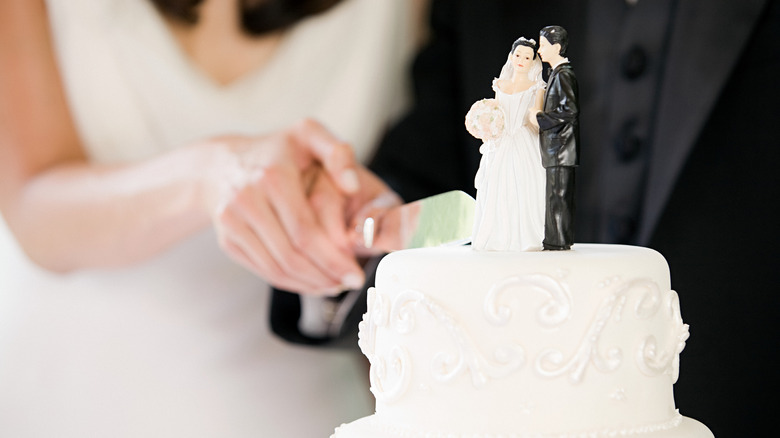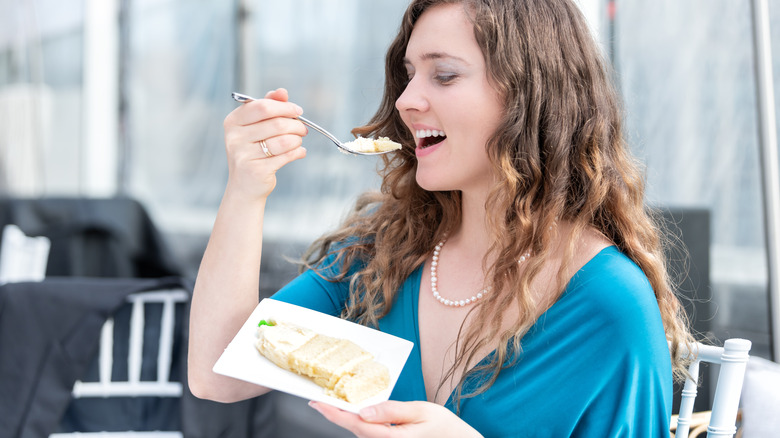Why Do We Really Eat Cake At A Wedding?
Weddings are more diverse affairs these days than ever before. Once upon a time, the expectation was for a wedding to be a formal event with white dresses, church ceremonies, lots of guests, plus bridesmaids and groomsmen. Today, weddings can be as simple or as fancy as the happy couple wants, with no guests or a small army, on the beach or in a backyard, hors d'oeuvres or multi-course banquets. No matter what the latest trends are, or how much wedding customs morph over time, one element remains a staple: the wedding cake.
While the elements of the "cake" may vary (cakes made of donuts, pies, cupcake towers), a sweet confection on display that the couple cuts and serves before guests partake is almost always an important part of the wedding day. As it turns out, offering cake at a wedding isn't just to satisfy the sweet tooths of the party-goers. It's rooted in tradition and symbolism, just as much as tossing the bouquet and showering the newlyweds with rice. Like most wedding traditions, this one is also meant to benefit the newly married couple.
Never decline a slice of cake
According to Gastronomica, Eating wedding cake goes all the way back to ancient Rome, where a wheat or barley cake was broken over the bride's head to symbolize good luck. She and her groom would eat a few bites, after which guests would do the same. When Rome invaded England, this and other customs were integrated into English society. By medieval times, wedding guests were bringing sweet breads and buns instead of plain barley cakes, which they would pile on top of each other. The married couple would then try to kiss each other over the top of the cake tower. If they didn't knock the tower over, they were supposedly ensured a life of wealth.
By the time of the late 17th century, the English were eating "Bride's Pye" at weddings, which featured a pastry crust filled with things like oysters, lamb testicles, and pine nuts. Every guest had to eat a piece of this pie, as it was considered bad manners to decline. To make that pie a little easier to swallow, a ring was placed inside, and if a single woman got the ring in her slice, she'd be the next to marry. Fortunately, within the same century, Bride's Pyes turned into sweet cakes made with fruits and sugar and continued to be enjoyed by the bride and groom and their guests, a tradition that has carried on to the present day.

